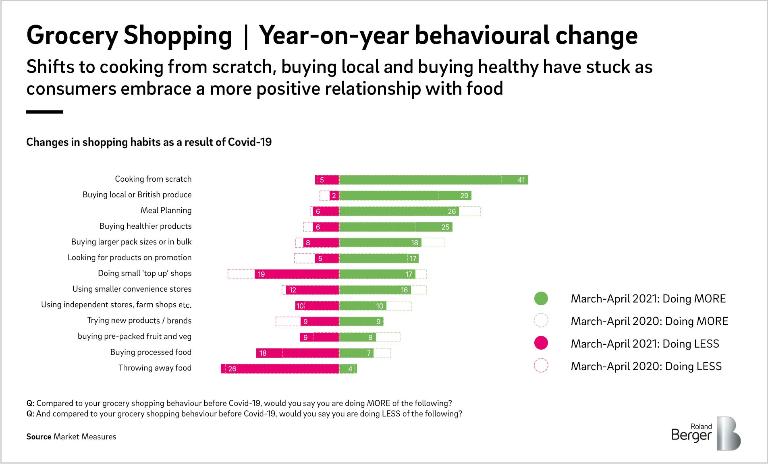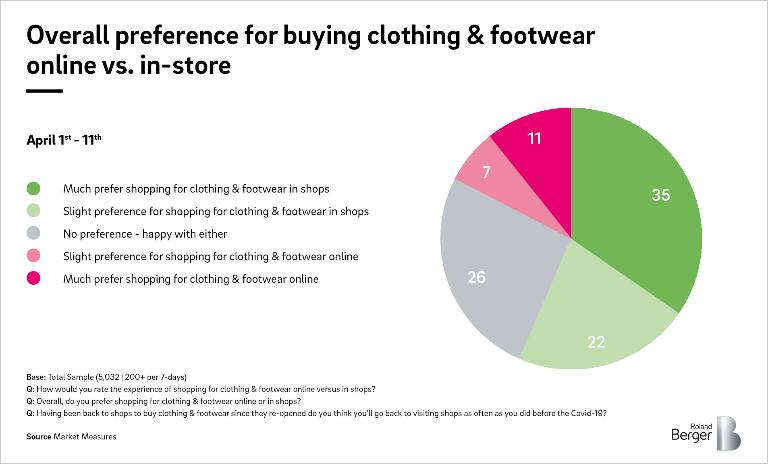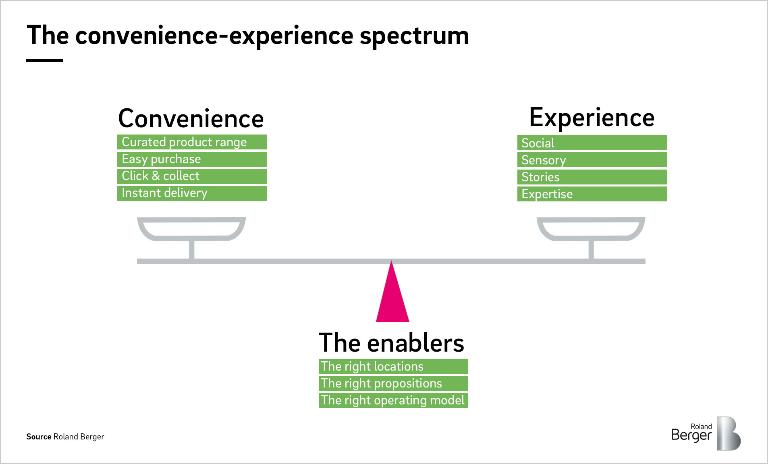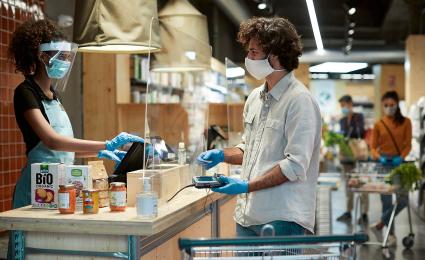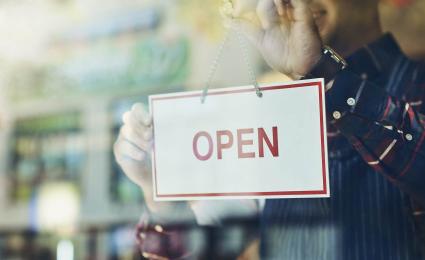From sustainability to digitalization, businesses in consumer goods, retail, and agriculture face a variety of challenges. Discover how Roland Berger can help.


Stores, reinvented
Bringing the magic back to physical shopping spaces
Covid-19 has rapidly accelerated the shift to e-commerce, with major impacts on physical stores and urban centers. But in-store shopping still has a vital part to play in the fabric of society. To thrive, retailers must now redefine the role of their stores and create more diverse and inspiring shopping experiences that reflect the desire for human interaction.
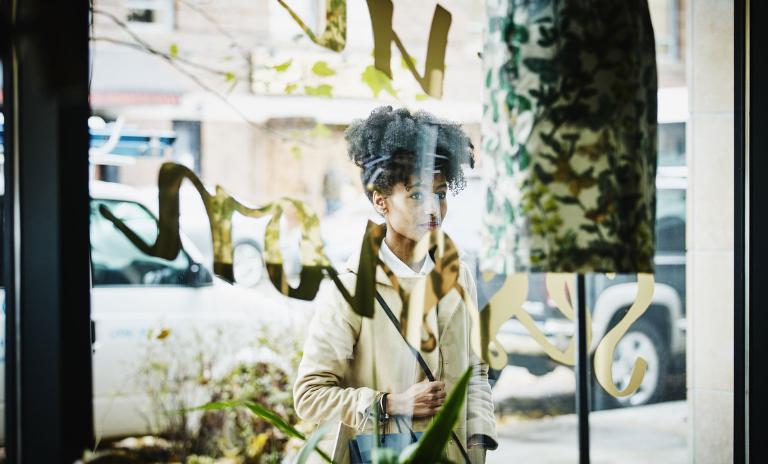
Stores are suffering
In most developed markets, particularly the United Kingdom, the DACH region and the United States, retail has been shifting from bricks and mortar to online for some time. This transition has now been dramatically accelerated by the Covid-19 pandemic, creating an unprecedented level of retail vacancies. The implications will be profound – for physical retail, the high street and the urban environment in general.
In the UK, many retailers are already making significant changes to their store strategies: John Lewis is planning shop-in-shops at Waitrose supermarkets; Asos and Boohoo are closing many Debenhams and TopShop stores; and Asda's new owners are considering multiple new avenues, from nail bars to coffee shops, to leverage excess space in large out-of-town stores.
In the DACH region, meanwhile, urban centers are dominated by fashion retail and often centered around department stores. Bricks-and-mortar fashion retail has struggled during the pandemic, with sales declining by up to 70%. Many companies have applied for government aids or filed for bankruptcy. As retail vacancies rise, cities are expected to increasingly explore alternative use options.
Physical stores are also suffering in the US, with the situation even leading to unlikely alliances: Amazon and mall operator Simon Property Group are exploring the possibility of turning vacant mall spaces into online fulfilment centers.
Overview of key trends
We have identified four key trends that are shaping a radically different role for the store in the retail ecosystem. Many have either been accelerated or caused by the pandemic.
1. Consumption trends: Changing spending patterns
Since the pandemic began, online spending has increased significantly: In the UK, it now makes up 32.8% of total retail spend – up from 22.1% in March 2020. But Covid-19 has caused shoppers to buy less in general: UK retail spend declined by 1.9% in 2020, the largest annual fall since records began in 1997.
Consumer priorities are changing – there has been strong growth in health and wellbeing products, and an explosion in categories relating to working from home such as office furniture and home improvement. A focus on convenience, sustainability and the importance of community is benefiting some local independent businesses, particularly food sellers.
2. Real estate trends: Escape the city
The UK is one of the world's most urbanized countries: In 2019, urbanization was at 83.65%, up from 81% in 2009. However, Covid-19 has turned this trend on its head as people leave cities in search of more green space and a different quality of life, assuming home working will continue. In the summer of 2020, Rightmove, the UK’s largest online property website, reported a 126% increase in people considering properties in village locations and a 68% rise in those searching in towns.
This is dramatically changing the real estate landscape. Lockdowns, consumer health concerns and a loss of tenants have hit shopping centers and urban centers hard. Out-of-town retail parks have fared somewhat better due to the ease of parking, enabling click-and-collect, as well as a greater availability of outdoor space. Overall, though, UK retail vacancies reached an all-time high of 13.7% in the fourth quarter of 2020.
According to a survey by Barclays Corporate Banking, one in five retail executives sees the future of the physical retail industry on local high streets rather than in city centers. Data shows that visitor numbers in smaller town centers have recovered faster than in large cities, where commuters continue to work from home and avoid public transport, and visitor numbers related to tourism and trade fairs are yet to recover.
Company voluntary arrangements, the pandemic and the threat of store closures have tilted the negotiating power from landlords to retailers. In the UK for example, where quarterly rents in advance were the norm, some have moved to monthly in advance or even monthly in arrears. Turnover-based rents, once the preserve of shopping malls, are becoming more commonplace.
Government and local authority intervention will be needed to address key drivers such as zoning and planning permission, business rates, and the types of property that could replace vacant retail outlets. In the UK town of Stockton, for example, the local council is proposing to transform half the high street from an ailing shopping arcade into a park. This would still feature some commercial property, including restaurants and cafes, however most existing tenants would be moved into a neighboring shopping center.
3. Social trends: Physical still matters
Retail has the potential to spearhead the reintroduction of social and cultural interaction post pandemic. According to one April 2021 survey of UK consumers, 57% of respondents would prefer shopping for clothes and footwear in store than online. This suggests that although people have adjusted to virtual ways of working, shopping and socializing, they are still keen on physical experiences. Visiting a store is not necessarily just a transaction: it can be an emotional experience for shoppers to engage with their brands, friends and society as a whole.
4. Economic trends: A new commercial reality
In a January 2021 letter to the government, the German Retail Association said urban non-food retail had seen a revenue decline of 36 billion euros in 2020. Almost two thirds (64%) of non-food retailers are in danger of bankruptcy, it said, including 82% of shoe/leather retailers and 76% of fashion retailers.
Retail's shift to online has seen a series of accelerated business failures and a flurry of M&A activity, predominantly in the US and UK. The acquisitions of former UK retail "jewels” Debenhams and TopShop, by Boohoo and Asos respectively, transformed traditional retail players to pure plays almost overnight. In the US, iconic retailers like Neiman Marcus, Brooks Brothers, J. Crew, Lord & Taylor and J.C. Penney have all filed for bankruptcy. In the DACH region, meanwhile, major government support for struggling businesses has prevented a similar situation.
Bricks-and-mortar retailers were already struggling to adapt to an omnichannel model before the pandemic, which has only exacerbated the issue. But despite the impressive growth in e-commerce, the majority of retail sales will take place in physical stores for the foreseeable future. The need for stores to pay their way and serve a clear role in a retailer's business model is now more crucial than ever. They must find their place in the new ecosystem.
Implications for stores
Much has changed since early 2020: social and real estate dynamics; customers' mental models and expectations; as well as the economic fundamentals of stores. Retailers must strike a balance on the convenience-experience spectrum, which may vary by store type within a single retailer's estate.
Convenience
The more consumers shop online, the more they expect their in-store experience to run quickly and seamlessly. Retailers should focus on the following four areas.
Experience
Sensory experience and social contact have long been at the heart of the shopping experience. As retailers reshape their store strategies, many are realizing that the store is more than just a home to transactions; it can also be a place for human experiences to come to life in a way digital cannot replicate. These experiences comprise four key dimensions: social, sensory, stories and expertise.
The enablers: How to redefine the role of stores
Stores need to do much more than just transact – they need to bring back the magic to shopping and deliver something special and unique. What exactly that "something special" is will be different for each retailer or even each store. Retailers should ask themselves the following key questions to redefine or revisit the role of their stores:
1. What propositions should I offer in my stores?
- What do my customers need from my stores?
- Which of the key dimensions in convenience and experience do I want my stores to deliver?
- What will my stores do that my online channel cannot?
- How should I adapt my product offering to reflect customer needs?
- Which products should be present in the offline portfolio and how should this complement online ranges?
2. How many stores do I need?
- Are they in the right place given all the changes in customer behavior and footfall?
- Do I have surplus space I need to repurpose or close?
- How do I create an omni-channel experience?
3. What should the operating model be for my stores?
- How will I make my stores a great place to work and shop?
- What new skills and support do my store teams need?
- What additional technology should I implement at the stores for improved convenience and experience?
Three steps for immediate action
The time is ripe to create more diverse and inspiring shopping experiences that reflect the desire for human interaction and enable stores to play a role in the fabric of society.
Retailers should start with these three steps:
- Clearly define the role their stores will play on the convenience/ experience spectrum and define how different stores will enhance online or deliver an experience which online cannot.
- Understand the three key enablers (location, proposition and operating model).
- Take bold action to reconfigure the store estate accordingly.

